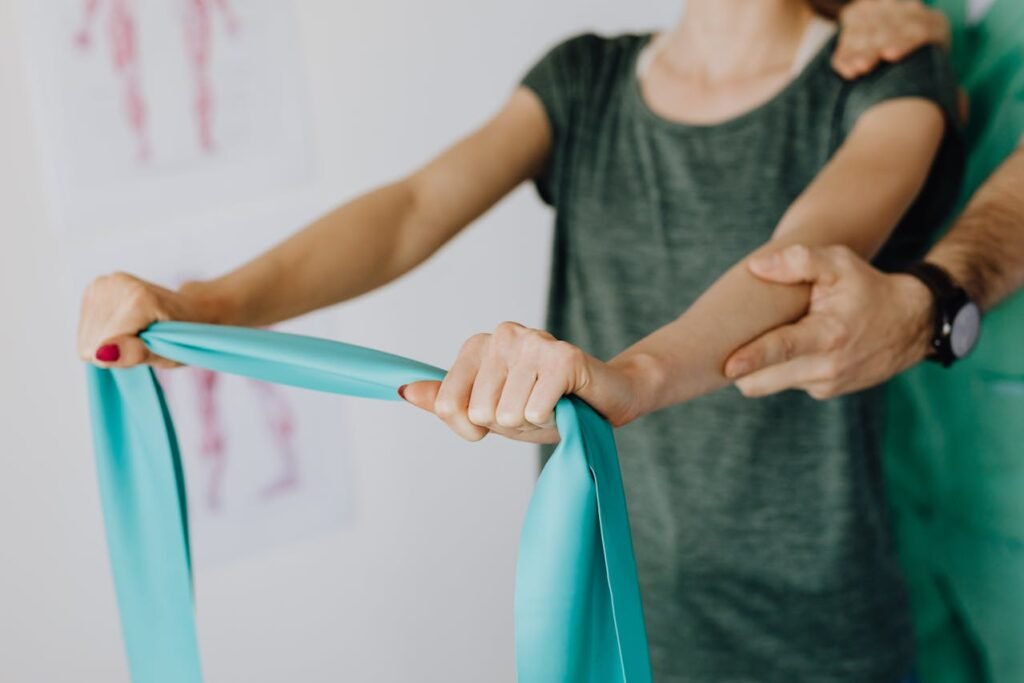Life after an amputation is filled with new challenges, but also with new possibilities.
One of the most important steps in recovery is helping the remaining muscles — called residual muscles — stay strong, active, and ready for future use with a prosthetic.
These muscles do more than just move your limb.
They send signals that control a prosthetic hand or arm, support your daily activities, and help you keep your independence.
Without regular training, they can weaken over time, making prosthetic use harder later on.
That’s where the BrawnBand comes in.
It is an advanced muscle stimulation device designed to activate and strengthen residual muscles safely and effectively.
With the right approach, it can speed up your recovery, improve your control, and make you more confident with your prosthetic journey.
This guide will walk you through how to use the BrawnBand step by step — from setting it up, to building a training routine, to tracking your progress.
It’s written in simple, clear language so you can follow along easily, whether you’re at home or working with a therapist.
The goal is simple: to help you get the most out of your recovery so you can move forward with strength, comfort, and confidence.
Understanding Residual Muscle Training After Amputation
What Are Residual Muscles

Residual muscles are the muscles that remain in your limb after an amputation.
Even though part of the limb is gone, these muscles still work and can be trained to move and contract.
They are not just for strength — they are the link between your brain and a prosthetic device.
When you think about moving your missing hand or arm, these muscles still send signals.
Why Training Them Matters
After an amputation, it is common for unused muscles to weaken.
This makes it harder to control a prosthetic when you start using one.
Training residual muscles early helps keep them active and strong.
It also keeps the nerve pathways open so your brain and muscles continue to “speak” to each other clearly.
How Muscle Signals Control Prosthetics
Modern myoelectric prosthetics use sensors to detect tiny electrical signals from your residual muscles.
The clearer and stronger those signals are, the better the prosthetic responds.
If your muscles are weak or slow to activate, the prosthetic might react poorly or feel hard to control.
That’s why muscle training is a key step before prosthetic fitting.
The Challenge of Early Training
In the weeks after surgery, movement can feel difficult.
Pain, swelling, or fear of strain may make you avoid using your muscles.
But safe, guided training — like with the BrawnBand — allows you to start activating muscles gently without heavy effort.
This builds confidence and helps you avoid losing muscle strength in the early stages.
The Role of BrawnBand in Recovery
What Is the BrawnBand
The BrawnBand is an electronic muscle stimulator designed for rehabilitation.
It sends mild electrical pulses to your residual muscles, making them contract and relax.
This is not painful — most users feel a gentle tingling followed by a light muscle tightening.
The intensity can be adjusted so it’s always comfortable for you.
How It Helps Residual Muscles
When you first start recovery, you may not have the strength or confidence to move your muscles fully.
The BrawnBand helps by “reminding” your muscles how to contract.
Each pulse acts like a signal from your brain, keeping the muscles active even when you are tired.
This helps maintain muscle tone, improve circulation, and speed up healing.
Why It’s Safer Than Overtraining
Without guidance, you might push too hard or use the wrong technique when trying to move your muscles.
Overtraining can cause soreness or delay healing.
The BrawnBand delivers controlled, gentle stimulation that works the muscles without strain.
It’s a way to train effectively while protecting your recovery.
Setting Up the BrawnBand for the First Time
Choosing the Right Position
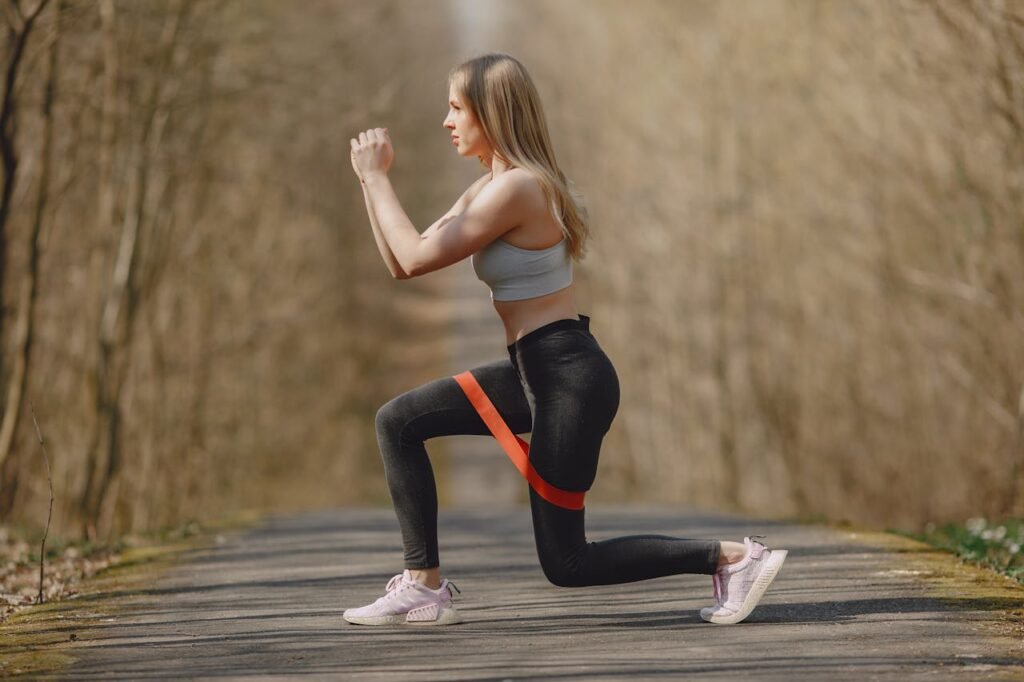
The first step is placing the BrawnBand over the correct part of your residual limb.
This is usually where your key muscles are located — your therapist can help identify the right spots.
Correct placement ensures the pulses target the right muscles for your training goals.
Even a small shift in position can change which muscles are activated.
Adjusting the Intensity
The BrawnBand allows you to start with very low intensity and slowly increase it.
The goal is to feel a gentle contraction, not discomfort.
You should always start at the lowest setting and raise it only until you feel a clear, comfortable muscle movement.
This ensures your training is safe and pleasant.
Duration and Frequency
For beginners, short sessions of 10–15 minutes are best.
You can do these once or twice a day, depending on your comfort level and your therapist’s advice.
Over time, you can increase session length or frequency as your muscles adapt.
Consistency is more important than long, intense sessions.
Step-by-Step Training Routines with the BrawnBand
Starting with Awareness Exercises
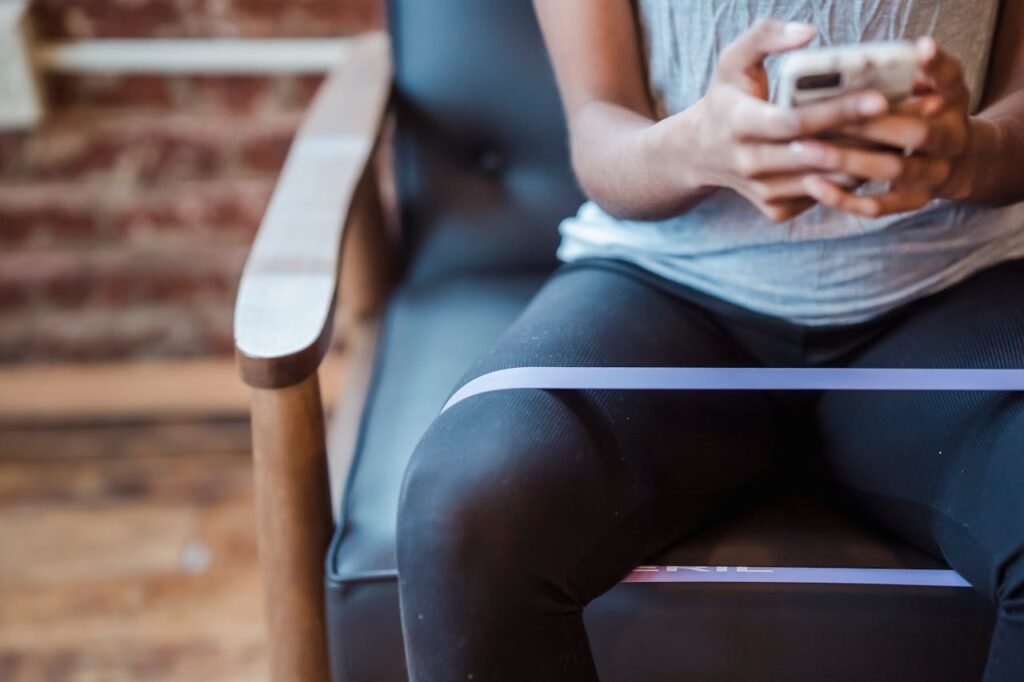
Before you even switch on the BrawnBand, spend a few minutes focusing on your residual limb.
Think about moving the missing hand or fingers as if they were still there.
You may not see movement, but your brain is sending signals to the muscles.
This mental rehearsal wakes up the neural pathways that will help you control a prosthetic later.
Gentle Activation Sessions
Once you’re ready, place the BrawnBand over your key muscle groups and set it to the lowest comfortable level.
Allow the device to stimulate the muscle for a few seconds, then rest for a few seconds before the next pulse.
In the early stages, 10 minutes of this pattern is enough to build endurance without causing fatigue.
Pay attention to the rhythm of contraction and relaxation, and try to match your breathing to it for a smoother flow.
Adding Voluntary Contractions
After a few days of comfortable use, you can start combining the BrawnBand’s stimulation with your own effort.
When you feel the pulse begin, try to contract the muscle at the same time.
This teaches your brain and muscle to work together, reinforcing the control you’ll need for a prosthetic.
This stage also helps you build stronger, more deliberate signals that sensors can detect easily.
Building Endurance Gradually
Endurance matters because you’ll use these muscles all day once you have your prosthetic.
After a week or two, slowly extend each session from 10 to 15 or even 20 minutes.
Keep the intensity at a level that feels firm but not uncomfortable.
Remember, the goal is steady progress, not maximum power in one go.
Incorporating Movement Patterns
While the BrawnBand stimulates your muscles, you can add small movements if your limb allows.
For example, if you have partial wrist motion, try flexing and extending in sync with the pulses.
If you have elbow mobility, practice bending and straightening gently.
This begins to link muscle activation with real movement, which is essential for everyday use.
Using BrawnBand with Functional Tasks
Once your muscles can handle longer sessions, try pairing BrawnBand training with light daily activities.
You might wear it while holding a cup, stabilizing an object on a table, or practicing light typing.
These tasks teach your muscles to activate in the context of real-world actions rather than in isolation.
It’s also a great way to make the training more engaging and less repetitive.
Tracking Progress
Keeping a simple journal helps you see how far you’ve come.
Write down the intensity level you used, the session length, and how your muscles felt afterward.
You can also note improvements in how easily you can activate your muscles without the device.
Seeing these changes over time keeps you motivated and on track.
Adjusting Based on Recovery Stage
Your training routine with the BrawnBand will change as you heal.
In the early phase, the focus is on gentle activation and maintaining muscle tone.
Later, you’ll work on building strength, endurance, and precision.
It’s important to review your plan regularly with a therapist so it always matches your current needs.
Advanced BrawnBand Techniques for Residual Muscle Training
Moving Beyond Basic Stimulation
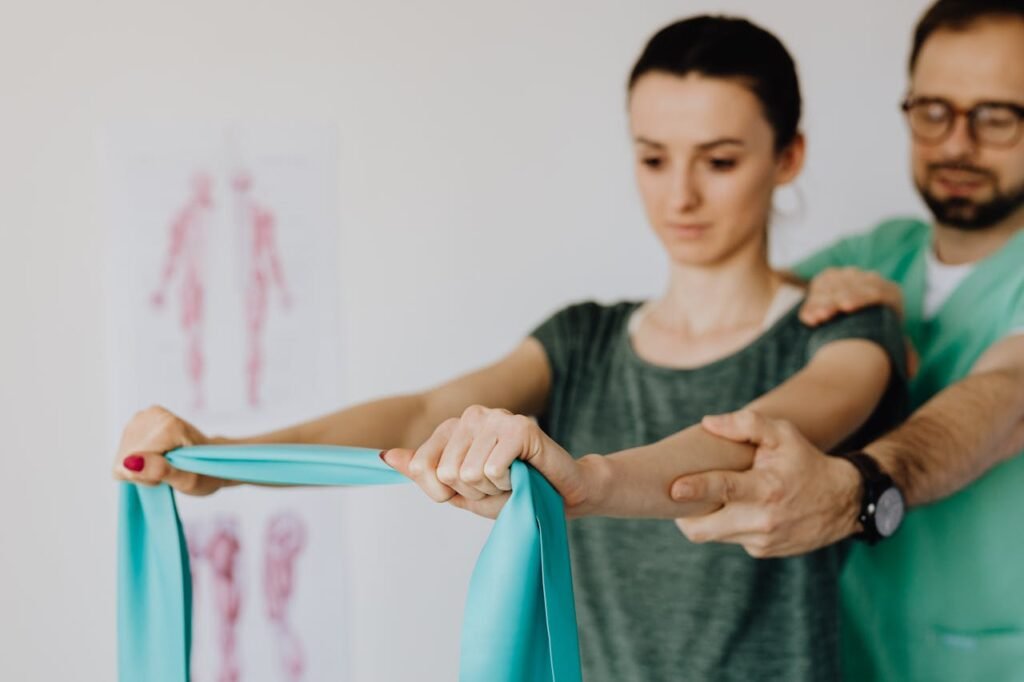
Once you are comfortable with the basic BrawnBand sessions, it’s time to make the training more dynamic.
The goal at this stage is not just to keep the muscles active but to refine control, increase endurance, and integrate training with everyday movements.
This ensures that when you transition to using a prosthetic, your muscles already know how to respond quickly and with precision.
Layering Voluntary and Stimulated Movements
In early training, you probably relied mostly on the BrawnBand to trigger muscle contractions.
In the advanced phase, you take a more active role.
When the device sends a pulse, contract the muscle as hard as you comfortably can at the same moment.
This double activation strengthens the signal pathways between your brain and the residual muscle.
It also builds the habit of deliberate, strong contractions that prosthetic sensors can easily detect.
Training for Speed of Response
Strength alone is not enough for good prosthetic control — you also need quick reaction times.
You can train this with the BrawnBand by shortening the stimulation duration and rest intervals.
For example, instead of a five-second contraction, try two seconds on and two seconds off.
This rapid-fire pattern trains your muscles and nerves to activate faster, which helps with quick adjustments in daily tasks.
Alternating Muscle Groups
If your residual limb still has multiple active muscle areas, alternate stimulation between them during a session.
For instance, spend one minute on the flexor muscles, then one minute on the extensors.
Switching back and forth not only builds strength evenly but also teaches your brain to switch control signals efficiently.
This is especially useful for multi-grip prosthetics that rely on changing muscle signals to change grip patterns.
Combining with Mirror Therapy
Mirror therapy uses the reflection of your sound limb to trick your brain into “seeing” the missing limb move.
When you place a mirror between your arms and move your sound side, your brain starts to believe the missing limb is also moving.
If you use the BrawnBand at the same time, the visual feedback from the mirror combines with the muscle stimulation, creating a stronger brain-muscle connection.
This can make your contractions more natural and easier to reproduce without the device.
Integrating BrawnBand with Resistance Exercises
Once your muscles are stronger, you can add light resistance to your sessions.
This could be as simple as gently pushing your limb against a soft cushion while the BrawnBand is active.
The added resistance makes the muscles work harder, increasing both strength and endurance.
Always keep resistance light and controlled to avoid strain, especially in the early months of recovery.
Task-Specific Muscle Conditioning
Think about the movements you will need most once you have your prosthetic.
If you plan to use a prosthetic hand for typing, practice short, repeated muscle activations that mimic key presses.
If you’ll be lifting or carrying items, focus on longer, sustained contractions.
Tailoring your BrawnBand sessions to your future prosthetic use ensures that the training is directly relevant to your daily life.
Multi-Sensory Stimulation
Residual muscle control improves when the brain gets more than one type of feedback at the same time.
Try pairing the BrawnBand with light touch stimulation on the skin around your residual limb using a soft cloth or brush.
The combination of electrical pulses and tactile sensation helps your brain map the area more accurately, which can improve precision control.
Working on Muscle Isolation
One of the harder skills in myoelectric prosthetic control is isolating specific muscles without unintentionally contracting others.
For example, you may need to activate a flexor without engaging the extensor at the same time.
With the BrawnBand, you can focus stimulation on one muscle group and train yourself to activate only that group voluntarily.
Over time, this reduces unintentional signals and improves prosthetic accuracy.
Endurance Circuit Sessions
For advanced stamina training, combine multiple techniques into a single circuit.
Here’s an example:
- Two minutes of slow, strong contractions with the BrawnBand
- One minute of fast, short contractions
- One minute of functional activity like holding an object
- Thirty seconds of rest
Repeat this circuit three to five times, adjusting the intensity based on your comfort and energy level.
This approach prepares your muscles for the variety of demands they will face in everyday use.
Partner-Assisted Training
If you have a caregiver, therapist, or family member helping you, they can play a role in advanced training.
They can give verbal cues for when to contract, or vary the timing so you have to respond unpredictably.
This builds your ability to react in real time, a skill that becomes valuable for activities like catching an object or adjusting grip quickly.
Using BrawnBand for Signal Testing
Before you are fitted with a prosthetic, your prosthetist may test your muscle signals using sensors.
You can prepare for this by practicing with the BrawnBand and an EMG training app or device if available.
Seeing your muscle signal strength visually on a screen gives you immediate feedback, helping you refine your contractions.
Combining with Breathing Techniques
Proper breathing during muscle training can increase oxygen supply and improve endurance.
Try inhaling deeply just before a contraction and exhaling slowly as you hold it.
This rhythm keeps you relaxed, reduces tension in surrounding muscles, and improves consistency in your contractions.
Safety in Advanced Training
While it’s tempting to push harder in advanced stages, safety remains a priority.
Increase session time and intensity gradually, and avoid working to complete exhaustion.
If you feel sharp pain, dizziness, or extreme fatigue, stop immediately and consult your therapist before continuing.
Tracking Advanced Progress
In this phase, tracking progress isn’t just about session length — it’s about quality.
Note whether your contractions are more consistent, whether you can isolate muscles better, and whether your fatigue sets in later than before.
You can also track functional improvements, such as holding objects longer or performing a task more smoothly.
Daily Routines, Recovery Habits, and Long-Term Maintenance with BrawnBand
Why a Routine Matters
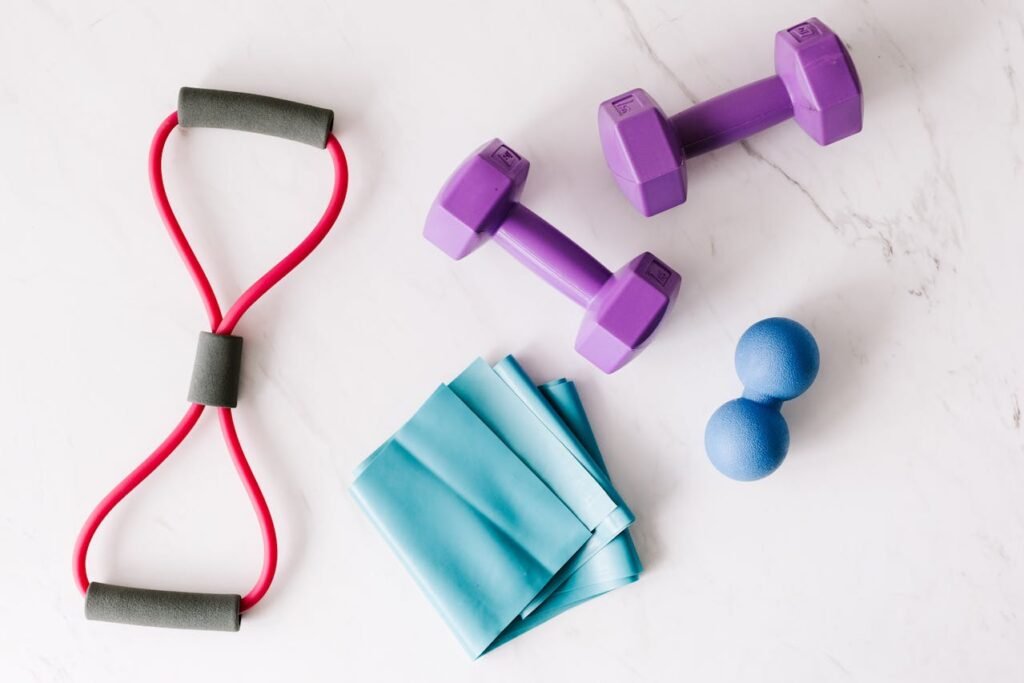
Consistency is the most important factor in rehabilitation after an amputation.
Muscles respond best when they are worked regularly, not in random bursts.
A routine gives your muscles time to adapt, grow stronger, and learn the control patterns you need for a prosthetic.
Without a plan, it’s easy to skip sessions when you’re tired or busy.
With a set schedule, the habit becomes automatic — just like brushing your teeth.
Designing Your Daily BrawnBand Plan
When you first start using the BrawnBand, keep sessions short and frequent.
For example, two 10-minute sessions per day — one in the morning, one in the evening — is a good starting point.
This gives you enough stimulation to keep the muscles active without overwhelming them.
As your muscles grow stronger, you can lengthen each session or add a third session in the middle of the day.
The key is to adjust gradually so you’re always improving but never pushing into pain or fatigue.
Combining BrawnBand with Stretching
Before each BrawnBand session, spend 2–3 minutes stretching the muscles in and around your residual limb.
This helps improve blood flow and reduces stiffness.
It also prepares the muscles for better contractions when the stimulation begins.
After the session, a short cool-down stretch helps release tension and prevent cramps.
Simple, gentle movements work best — nothing should feel forced or painful.
Morning Activation Routine
Using the BrawnBand in the morning can help wake up your muscles for the day ahead.
This is especially helpful if you plan to use your prosthetic later in the day, as your muscles will already be primed.
You might combine the morning session with simple mental imagery exercises, where you imagine performing tasks like holding a cup or turning a key.
This strengthens the brain-muscle connection right at the start of your day.
Evening Recovery Routine
An evening session with the BrawnBand can help undo the stiffness or fatigue that builds up during the day.
It also signals to your body that it’s time to recover, making it easier to relax before bed.
You can keep the intensity lower at night, focusing on gentle contractions that promote blood circulation without overworking the muscles.
Rest Days and Recovery Balance
Just like any other muscle training, recovery days are essential.
You don’t have to stop all activity, but you should give the muscles a break from full-intensity stimulation.
On rest days, you can focus on light massage, stretching, or mirror therapy to keep the mind-muscle link strong without heavy work.
This balance prevents overuse injuries and keeps your training sustainable for the long term.
Integrating BrawnBand into Everyday Life
The beauty of the BrawnBand is that it can be used during simple activities.
For example, you can wear it while reading, watching TV, or sitting at your desk.
By pairing it with a low-effort activity, you make it easier to stick to your sessions because it doesn’t feel like an extra chore.
Just make sure the activity doesn’t distract you so much that you stop noticing how your muscles are responding.
Tracking Long-Term Improvements
Over weeks and months, improvements can be subtle.
That’s why it helps to keep a simple progress log.
You might track things like:
- Intensity level you can comfortably handle
- How long you can sustain a contraction
- How quickly you can activate your muscles after a cue
- Any new movements you can perform without help
Looking back at your early notes can be motivating when you see how far you’ve come.
Preventing Burnout in Long-Term Use
It’s natural to feel motivated at first, but in long-term rehab, enthusiasm can fade.
One way to avoid burnout is to make small changes to your routine every few weeks.
You can try new contraction patterns, change the order of exercises, or pair BrawnBand sessions with different daily activities.
Variety keeps the brain engaged and makes training more enjoyable.
Using the BrawnBand Alongside Other Therapies
The BrawnBand works well with other rehabilitation methods.
You might combine it with physiotherapy sessions, mirror therapy, or guided functional training.
For example, you can use the BrawnBand before a prosthetic training session to warm up the muscles.
This can make it easier to control the prosthetic and get more out of your practice time.
Seasonal and Lifestyle Adjustments
Life changes, and your routine should adapt with it.
If you’re traveling, you might shorten sessions but increase frequency.
If you’re busier than usual, even a single focused 15-minute session can maintain your progress until your schedule clears.
The flexibility of the BrawnBand makes it possible to keep training no matter where you are or what’s going on in your life.
The Mindset for Long-Term Success
Long-term rehabilitation is about patience and persistence.
Some weeks will feel like a big leap forward, while others may feel slower.
The important thing is to stay consistent and remember that every session builds toward your goal of better control and independence.
Your prosthetic will only respond as well as your muscles can signal — and that control is built over time, not overnight.
By making BrawnBand training part of your daily life, you’re investing in your future mobility and confidence.
Transitioning from BrawnBand Training to Prosthetic Use
Knowing When You’re Ready
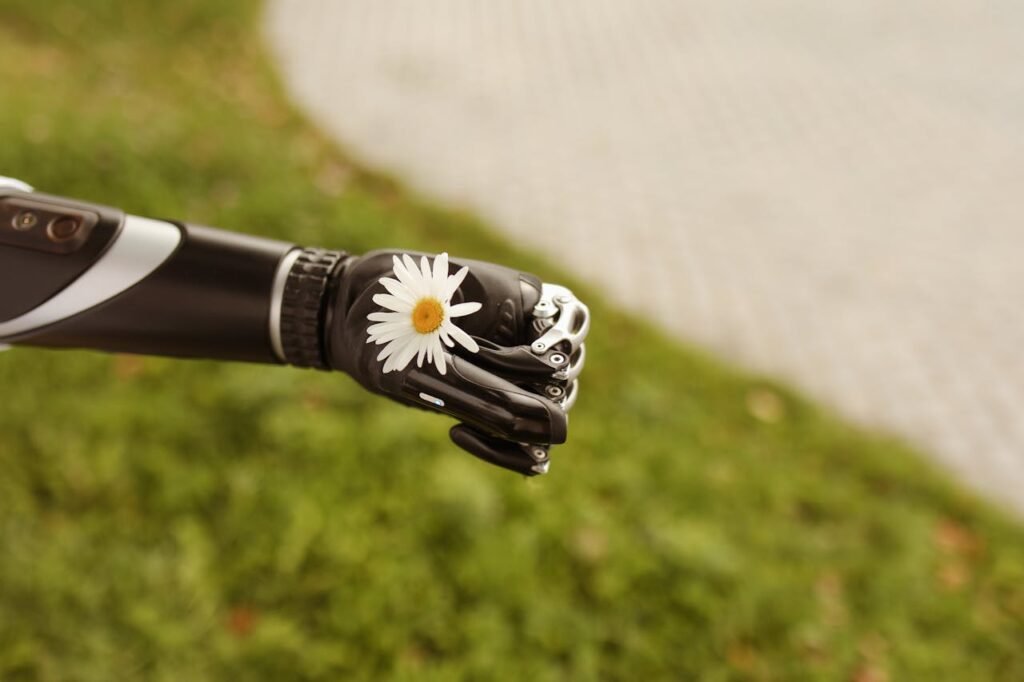
The shift from muscle training to prosthetic use is exciting, but timing matters.
You should be able to activate your residual muscles consistently and with control before starting prosthetic training.
Your therapist or prosthetist will check whether your muscle signals are strong enough for reliable sensor detection.
If you can perform voluntary contractions without the BrawnBand and maintain them for several seconds, you’re likely ready for the next step.
Gradual Introduction to Prosthetic Control
When you first start with your prosthetic, you won’t stop using the BrawnBand immediately.
In fact, it can still be part of your warm-up routine.
Stimulating the muscles before you put on your prosthetic can help them respond more quickly and accurately during practice.
At this stage, you’ll shift from focusing only on muscle activation to linking those contractions with real movements like opening, closing, or rotating a prosthetic hand.
Combining Old and New Routines
The best approach is to keep a mix of direct muscle training with the BrawnBand and functional prosthetic exercises.
This dual approach helps you refine your signals while building skill in real-world tasks.
Over time, you can reduce BrawnBand use to a few maintenance sessions per week.
Overcoming Early Challenges
It’s normal to find the prosthetic harder to control than you expected at first.
This is because you’re now combining muscle activation with movement, grip choice, and object handling.
The foundation you built with the BrawnBand will make this learning curve shorter and smoother.
If you notice your signals weakening, go back to more frequent BrawnBand sessions for a short period until your control feels strong again.
Long-Term Role of the BrawnBand
Even after you’ve mastered your prosthetic, the BrawnBand can still be useful.
It can help you maintain muscle tone during breaks in prosthetic use, like when traveling or recovering from unrelated injuries.
It’s also helpful for quick warm-ups before complex tasks that require precise control.
Conclusion
Recovery after amputation is not just about healing — it’s about rebuilding strength, control, and confidence.
Residual muscles are your bridge between thought and movement, and the BrawnBand is a powerful tool to keep that bridge strong and stable.
From the first gentle pulses that wake up your muscles to the advanced drills that sharpen your control, each session with the BrawnBand brings you closer to full independence.
It turns rehabilitation from something slow and uncertain into a clear, step-by-step process you can follow every day.
At RoboBionics, we believe that technology should serve people, not the other way around.
That’s why we design tools like the BrawnBand — to give you practical, reliable support in your journey toward prosthetic mastery.
Your progress may start small: a stronger contraction here, a steadier movement there.
But those small steps add up, and before long, you’ll find yourself doing more than you thought possible.
Stay consistent.
Stay patient.
And remember that every time you use the BrawnBand, you’re not just training a muscle — you’re training for freedom.
If you’re ready to begin, book a demo with RoboBionics today and see how the BrawnBand can be your partner in building a stronger tomorrow.



